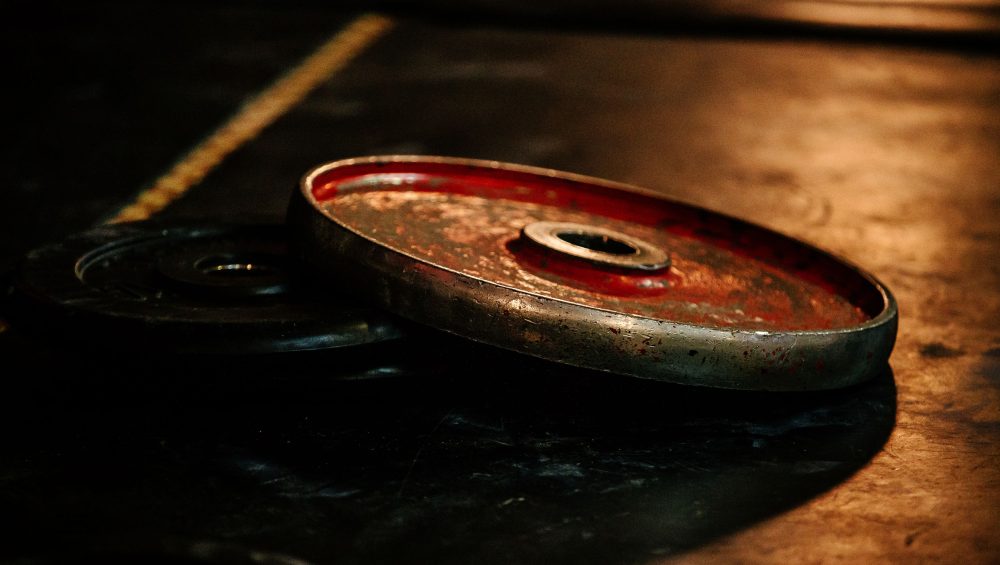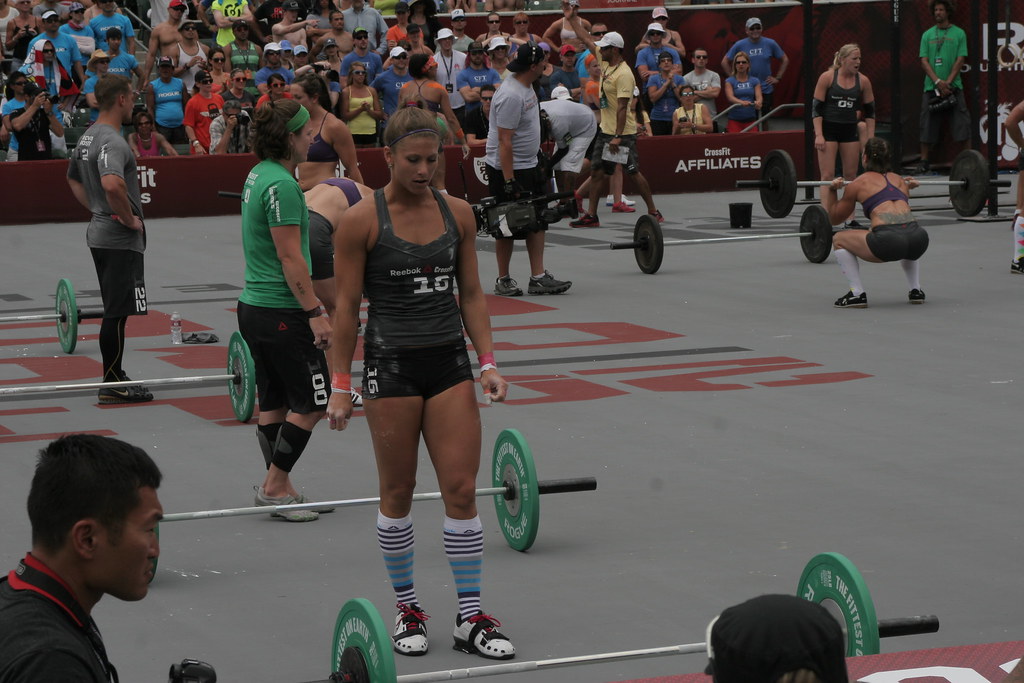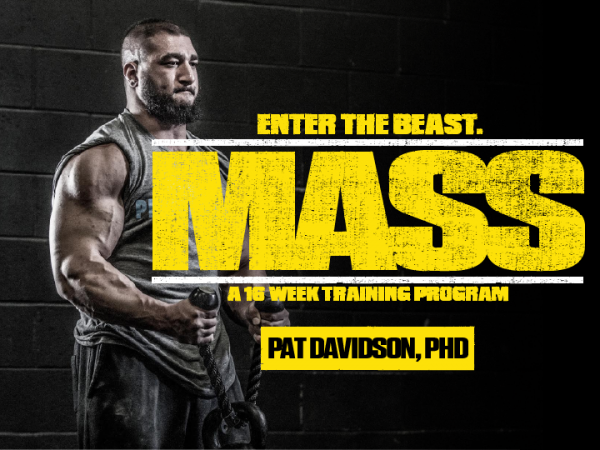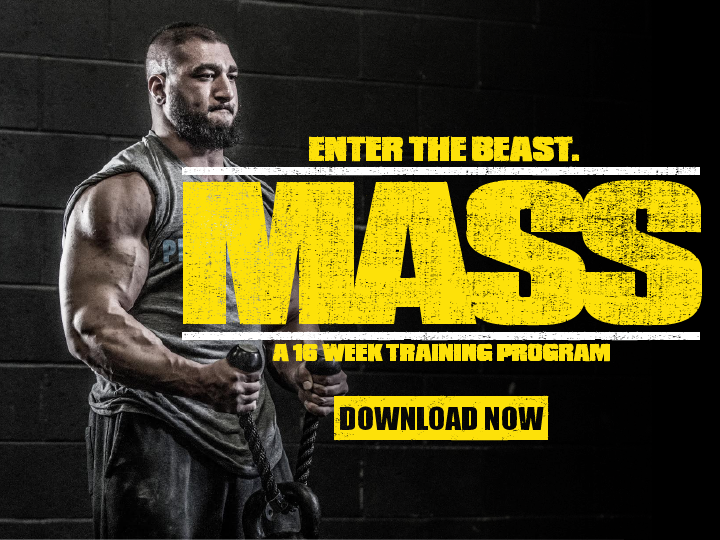Pat Davidson is the best interview on the internet.
He developed one of the most badass training programs in recent memory – MASS – a few years ago, and the interview(s) he and I did – Becoming a Brick Shit House HERE and HERE – were the most popular in this site’s history.
Well, he’s back. This time to discuss his sequel…MASS 2.
If you want to skip the foreplay and get straight to business…you can click THIS link to purchase. However, I’d encourage you to read the interview because you’ll want to punch through a brick wall after the fact. That, and there’s a special offer at the end for a discounted price only available to reader’s of this site.
Lets get to it.
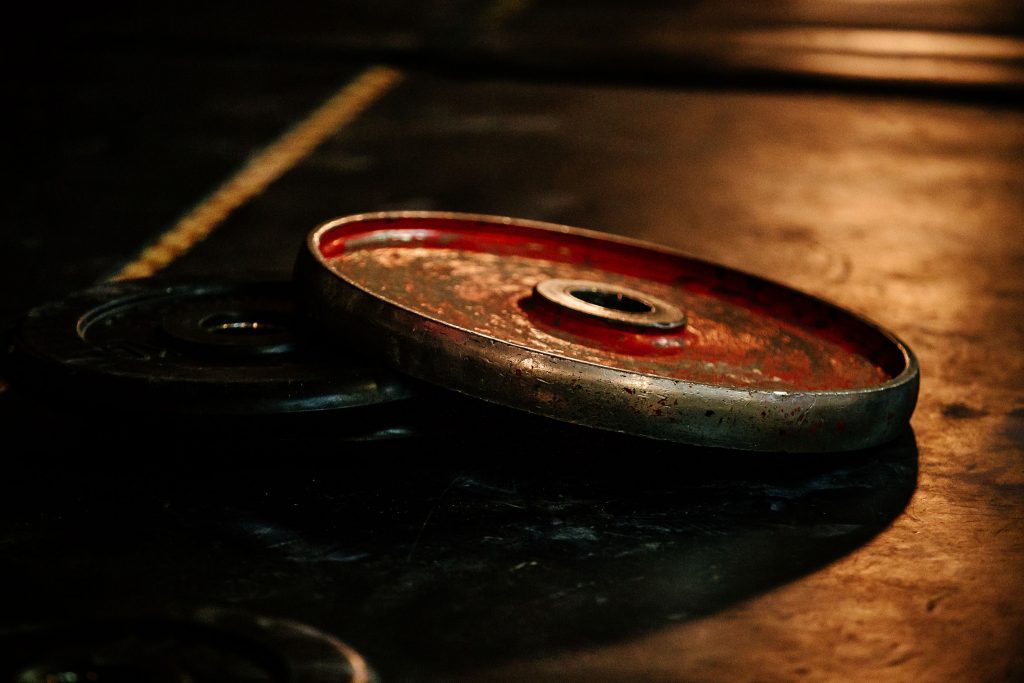
Even More Becoming a Brick Shit House
TG: Okay, obvious question: What’s different in MASS 2? The original MASS program was a beast. I know many coaches and people who followed it with great success. What’s different about MASS 2?
How much (more) will it make people hate life?
Who’s the target demographic?
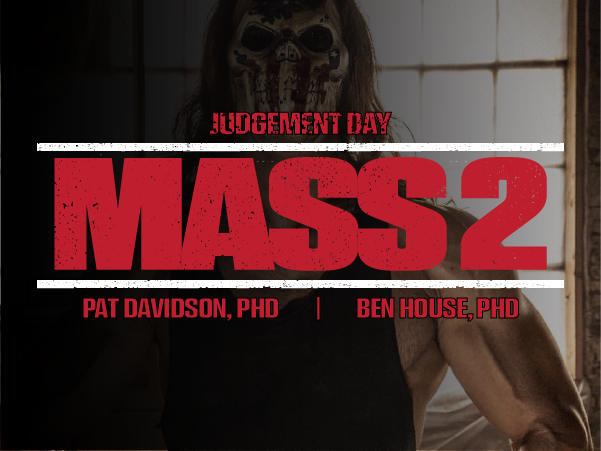
PD: What’s different about MASS 2? MASS 1 was my version of writing the most stupid program I possibly could. It was originally written for an intern at Men’s Health who had never lifted weights before and wanted to put on as much mass as possible in 16 weeks.
I wasn’t going to be able to coach this intern on a day to day basis, but I knew I would have to give him feedback. To be able to give him more accurate feedback, I started doing the program with him. I put the video of a couple workouts on social media and people started asking about them. I sent the program to some prominent coaches in our field, and they started doing the program, and they started posting videos.
Men’s Health was going to do a story on the intern, because he gained a ton of muscle on the program and they were going to name it best new program of the year.

I figured I could make some money out of the situation, so I turned the program into a book, and the MASS concept was born. The book got out into the world, and people started to have great results from it. I had to really start thinking about why the program was so effective for so many people.
My conclusion was that it made people do more mechanical work in less time than they were doing before, so it was an overload, and that the game like structure of the workouts was incredibly motivating for people and made them increase their effort.
The other major factor is that it forced people to be more consistent with their lifestyle factors. The workouts were so hard and punishing that people ate better food, more of it, got more sleep, drank less alcohol, etc, simply to reduce the punishment of the workouts…physiology drives behavior.
MASS 1 features the same workout four days a week for four straight weeks. Like I said, it’s kind of moronic…don’t get me wrong, there’s some brilliance in the simplicity, but it’s also wicked dumb too.
To me MASS 2 is real deal training. It’s the kind of program I would write for myself (it is what I write for myself).

MASS 2 takes lessons learned from MASS 1, and then flips the script on you a little bit, because rather than doing the same workout four days per week, there are four different workouts on the four training days each week.
MASS 2 uses a heavy day, a light day, and a moderate weight day kind of approach, and therefore trains different physiological pathways associated with strength, power, and hypertrophy. There are no easy days in MASS 2, rather different kinds of suck thrown at you across the week.
So in some ways, MASS 2 might not make you hate life as much as MASS 1, because you’ll have some variation and novelty across your weeks, but you’ll re-appreciate the way that shit can be served to you in slightly different stylings.
What’s the shit du jour?
It’s the shit of the day. Great, I’ll have that. That is MASS 2 in a nutshell.
The demographic that MASS 2 is written for is two fold in my mind. It’s for strength coaches, intelligent trainers, and exercise aficionados, but it’s also for regular people who want to learn the truth about things.
MASS 2 is written for those amongst us who are not cowards.
The weak like to skim the surface of topics in life. They like to read blurbs and watch two minute selfie videos on social media. Cowards don’t dig their heels into the ground and try hard when things get difficult.
They want CLIFF notes on everything.
Thankfully the world also has other people in it who are tough, resilient, and truly appreciate depth and challenge. They want the whole story, and the deeper the rabbit hole goes, the more excited they get about the dig. I wrote MASS 2 for this latter group, because very few people in fitness are writing books for them. There’s plenty of crap that regurgitates the same superficial shit that’s been around forever, and basically I want to light that stuff on fire and then put it out with a nice long piss.
That flaming piss is MASS 2.
TG: What have you added or taken out compared to the first iteration? Why?
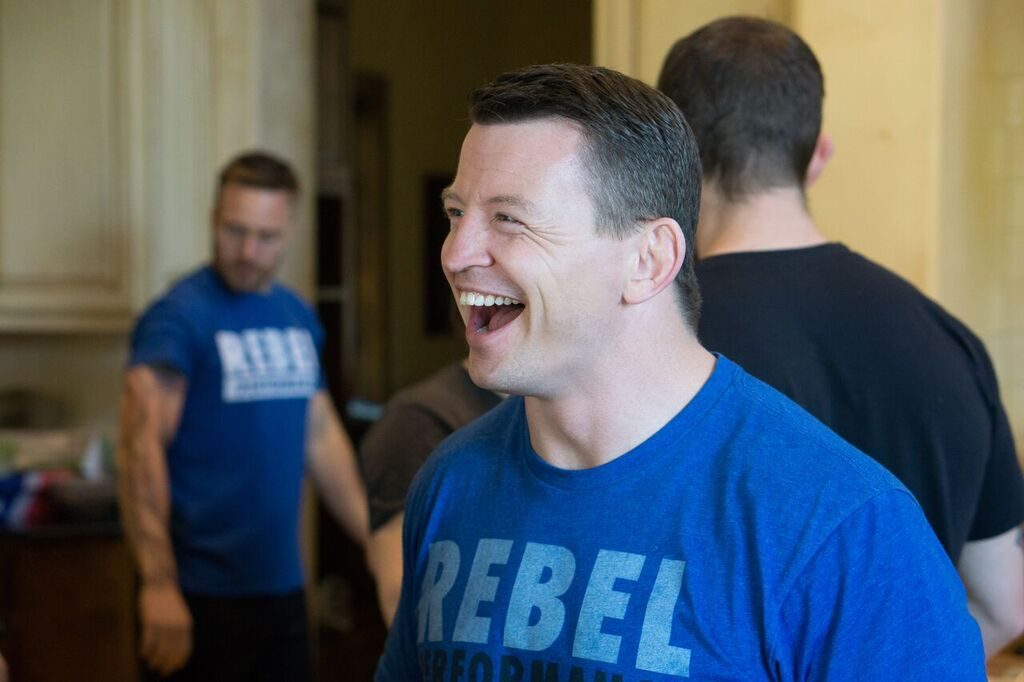
^^ This pic shows Pat actually is a very lovely person ^^
PD: One of the most obvious things that I added to this book is that I tell the reader some of my own life story. I talk about coming from a lineage of drunks and drug addicts, and personally being a recovering alcoholic and drug addict.I also talked some about being fired from Springfield College. Those experiences are part of my identity, and they’re elements that bring a lot of shame to me when I think about myself.
At the same time though, those two experiences have been powerful lessons for me to learn some much greater truths about myself. I’ve learned that I’m immature, arrogant, thin skinned, low in self esteem, resentful, and self destructive. At the same time I’ve learned that I can face uncomfortable truths, learn my tendencies and habits, and actually change my persona and behaviors with disciplined deliberate practice.
I’ve also learned that you can reframe what some would consider character flaws into strengths. Drug addicts are in fact the most goal directed amongst us. They want one thing and one thing only, and they usually do whatever it takes to acquire that thing. When you’re a recovering drug addict and you take that same capability and aim it at other things, there’s nothing you can’t acquire.
The other obvious difference is that MASS 1 was thematically inspired by Rocky IV. MASS 2, the sequel uses the greatest action movie sequel as its muse, Terminator 2.
Let’s face it, if you’re going to write a sequel to a badass book involving a Stallone movie, the only way you can follow that up is by channeling Arnold.
MASS 2 is bigger, badder, and stronger than the OG book. In my opinion, everything about the sequel is better than the original…the program, the content of the book, and the writing style.
TG: I know you like to go into the weeds as it relates to program design…..what do you feel are the most common mistakes most coaches make when it comes to writing programs?
PD: In this day and age, it’s actually criminal to not include something about, Start with the Why, in your response to your approach to things in life in 49 out of the 50 states (sorry Tennessee).
If you don’t include something from this book in a fitness based answer, you’re ostracized from the fitness world, and on your way into exile you get tarred and feathered, the shame bell nun walks you out of town, and even your mother throws rocks at you while you trudge head down and cry to the rhythm of Celine Dione’s, My Heart Will Go On.
Essentially most coaches don’t explain why they’re asking you to do something.
If you don’t tell people why something is important, they don’t believe in the concept. Belief will drive effort, and effort will drive physical performances that will cause the body to change.
What I just said doesn’t mean you can throw a shit program on paper, and then tell a magical story about it, and that will work. I think those of us who love training and science will work harder to learn better information, try those approaches out in our own training, and discover what really works, and why it works.
Those same people are usually so passionate that they want to tell other people about what they’ve learned. So I see great story telling about program design and actual knowledge about training science as being a symbiotic relationship that creates a positive feedback loop.
Great science ultimately ends in an explanation of the mechanisms.
The mechanisms of how things work is usually the most interesting part of the story…and those mechanisms are usually complicated, deep, and intertwined with other systems and stories. Great stories have multiple dimensions to them, often times come full circle, leave you with cliff hangers, make you want more, seamlessly weave a common thread throughout the plot, stretch your ability to question your previous assumptions, and inspire you to take action.
To me program design is story telling, and I get people to reach for the stars because they want to after the story affects them.
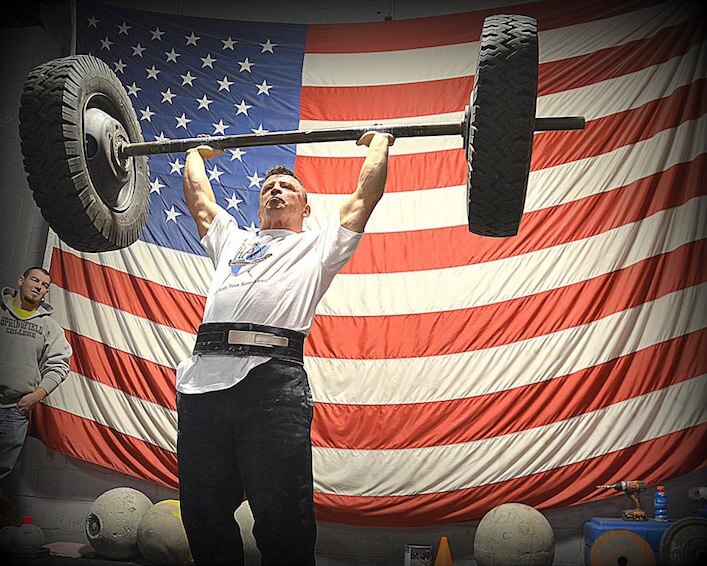
How many coaches do you know that try to explain everything to the people they work with?
I’ve definitely seen some do it, and they’re usually the great ones. There’s nothing else they want to do more than talk training. They’re excited about it, and if you let them, they’ll never stop passionately explaining every detail of what they think about the things they’re doing.
That’s how I felt meeting Rusty Jones. That’s how I felt hearing Al Vermeil talk. Those guys weren’t spring chickens at those points in time, but they had more energy and passion than 99% of 20 year olds I’ve met.
Something else that people make mistakes on is that they pick shit exercises or put things in a bad order.
Here’s a list of things that I think make something shit in no particular order.
- The TRX is involved.
- It’s a complex with light dumbbells.
- There’s a band around your knees and no barbell is in sight.
- Your first movement of the day is an isolation exercise for arms.
- The heaviest thing you did involved a cable.
- More exercises in your training day used a band than bars or dumbbells.
- You spent more than two minutes using a PVC pipe.
- The Viper (aka, the weak man’s log) made an appearance.
- At some point you did super man’s.
- The BOSU was stood upon.
Finally if you write a program and don’t physically try it, I really worry about that thing. I personally don’t put anything out into the world that I don’t test on myself. At some point I’ll probably get too old and fat to self test, but hopefully that isn’t until I’m 80 or something.
15% Off MASS 2
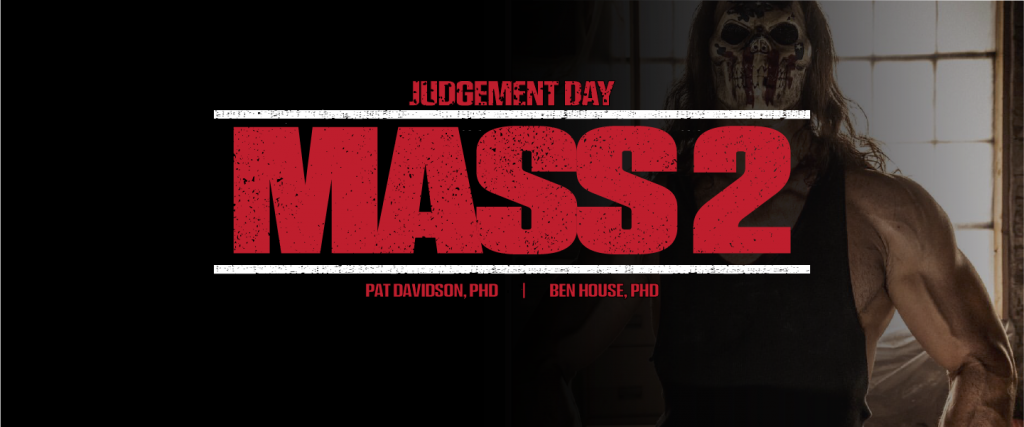
If you made it this far you can’t tell me you’re still on the fence and unconvinced to give this program a shot.
You should be salivating.
Well, if not, and you need a little more incentive, how’s 15% off the original price sound?
I wish I could sit here and say I did something cool like beat Pat in an arm wrestling match to finagle such a deal, but all I really did was ask.
All you have to do is go HERE and then type in gentilcore15 where it asks for the coupon code, and Sha-ZAM you get 15% off.
Happy (but not really) lifting.

